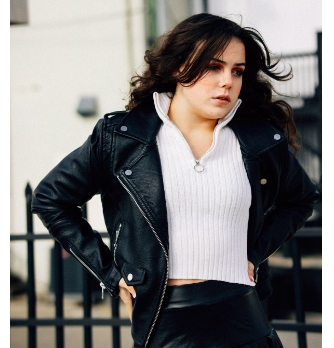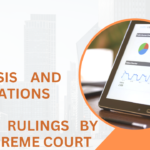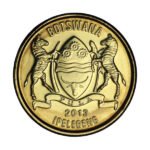In this era where environmental consciousness intertwines with our daily choices, the fashion industry is experiencing a profound transformation. The once dominant fast fashion narrative is making way for sustainability, and at the forefront of this revolution are eco-friendly jackets.
Thank you for reading this post, don't forget to subscribe!These jackets, designed with a commitment to minimizing environmental impact, not only showcase innovation in materials and processes but also stand as a proof to a growing global awareness of the consequences of our fashion choices.
The traditional fashion landscape has long been overwhelmed by concerns of overconsumption, waste, and pollution. From the extraction of non-renewable resources to the disposal of worn-out garments, the lifecycle of conventional jackets contributes significantly to environmental degradation.
In this article, we will explore the environmental consequences of traditional jackets, understand the principles driving the eco-friendly revolution and examine the evolving relationship between consumers and sustainable fashion. This is where fashion becomes a force for positive transformation—one eco-friendly jacket at a time.
The Rise of Sustainable Fashion
The fashion industry has long been associated with rapid production cycles, excessive waste, and environmental degradation. However, the tides are changing as more fashion brands and consumers embrace sustainability. Sustainable fashion goes beyond just using organic materials; it encompasses the entire lifecycle of a garment, from sourcing raw materials to manufacturing, distribution, and end-of-life disposal.
The Environmental Impact of Traditional Jackets
Before digging into eco-friendly alternatives, it’s important to understand the environmental impact of traditional jacket production. Conventional jackets often involve the use of synthetic fabrics derived from petrochemicals, such as polyester and nylon. The production of these materials is energy-intensive and releases harmful greenhouse gasses into the atmosphere.
Moreover, traditional dyeing processes contribute to water pollution, as toxic chemicals leak into rivers and oceans. The overall carbon footprint of a jacket is exacerbated by transportation and distribution processes, as garments are often manufactured in one part of the world and shipped globally.
The Eco-Friendly Revolution
Eco-friendly jackets are at the forefront of the sustainable fashion movement, supporting a more responsible approach to garment production. Brands such as USAJACKET are playing a vital role in reshaping the industry landscape. NyJacket has emerged as a beacon of sustainable practices, offering a range of eco-friendly jackets that prioritize both style and environmental responsibility. These jackets focus on reducing environmental impact at every stage of the production process.
Sustainable Materials
Eco-friendly jackets often utilize materials such as organic cotton, recycled polyester, and innovative fabrics like Tencel and Pinatex. Organic cotton eliminates the use of harmful pesticides, while recycled polyester repurposed plastic bottles into wearable fabric, diverting waste from landfills.
Natural Dyes and Low-Impact Processes
To address the issue of water pollution, sustainable jackets incorporate natural dyes and low-impact dyeing processes. These alternatives minimize the release of harmful chemicals into water sources, ensuring that the environmental impact is significantly reduced.
Local Production
Many sustainable fashion brands opt for local production, reducing the carbon footprint associated with long-distance transportation. Localized manufacturing also supports the growth of regional economies and ensures ethical working conditions for laborers.
Circular Fashion
The concept of circular fashion is gaining traction, emphasizing the importance of recycling and upcycling garments. Eco-friendly jackets designed with circularity in mind are easily disassembled or repurposed, extending their lifespan and minimizing waste.
The Impact on Consumers
The shift towards sustainable fashion is not just a trend; it’s a conscious choice made by consumers who are increasingly environmentally aware. As consumers become more educated about the environmental implications of their purchasing decisions, they are actively seeking out eco-friendly alternatives. Sustainable jackets offer consumers the chance to align their values with their fashion choices, allowing them to make a positive impact through their wardrobe.
Overcoming Challenges
While the sustainable fashion movement is making progress, it is not without its challenges. The price point of eco-friendly jackets can be higher due to the use of premium materials and ethical manufacturing practices. However, consumers are beginning to recognize the long-term value of these investments, understanding that a higher upfront cost often translates to a lower environmental cost in the grand scheme of things.
The Road Ahead
The future of sustainable fashion, especially in the world of eco-friendly jackets, holds tremendous potential. As technology advances and consumer demand continues to grow, we can expect even more innovative solutions and widespread adoption of sustainable practices within the fashion industry.
Governments, NGOs, and industry stakeholders are also playing a crucial role in shaping the future of sustainable fashion. Regulations and standards are being developed to hold companies accountable for their environmental impact, pushing the industry towards greater transparency and responsibility.
Conclusion
The exploration of sustainable fashion, particularly through the lens of eco-friendly jackets, underscores the industry’s transformative journey towards a more conscientious and environmentally responsible future. As consumers, designers, and manufacturers alike increasingly embrace sustainability, the positive impact on the environment will undoubtedly extend beyond our wardrobes. By choosing eco-friendly jackets, we not only make a fashion statement but also contribute to a more sustainable and harmonious relationship between style and the planet. It’s time to redefine fashion, one eco-friendly jacket at a time.










